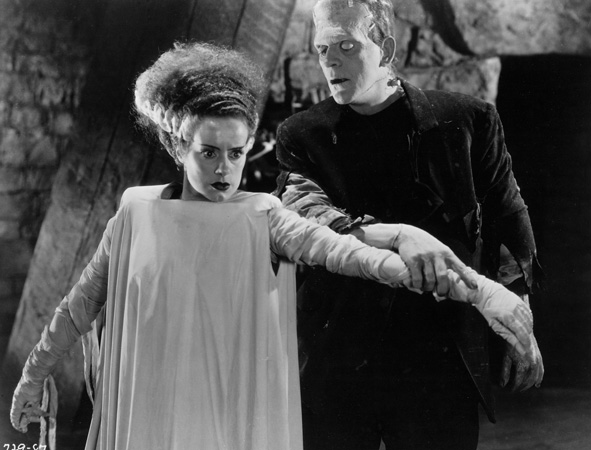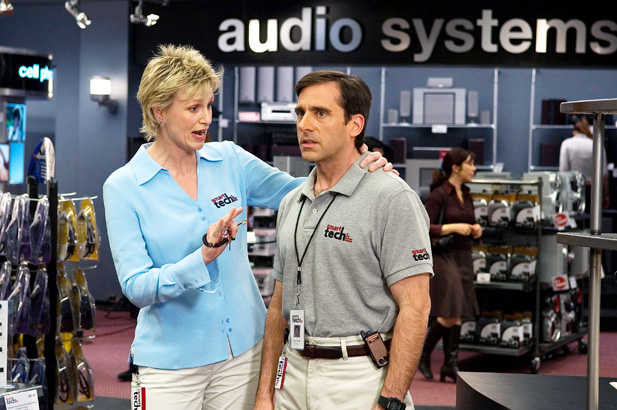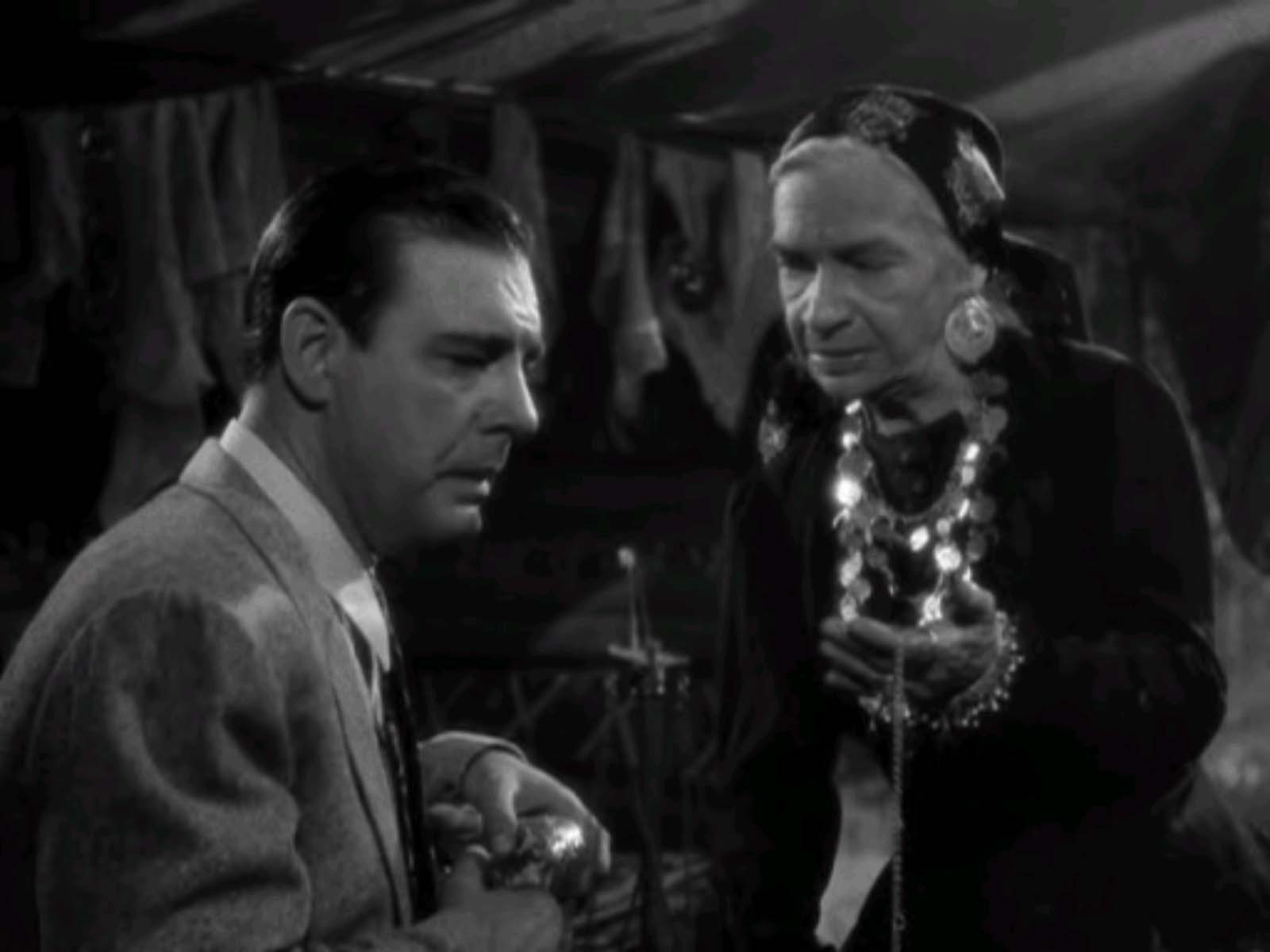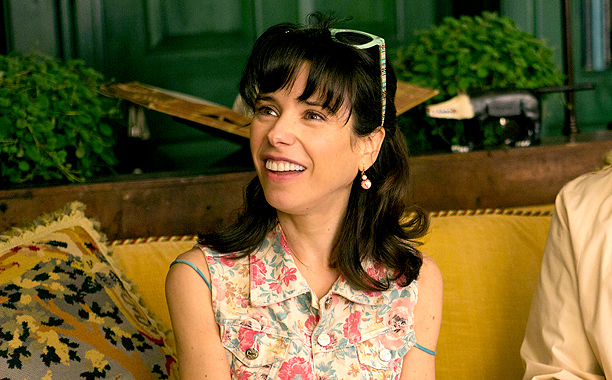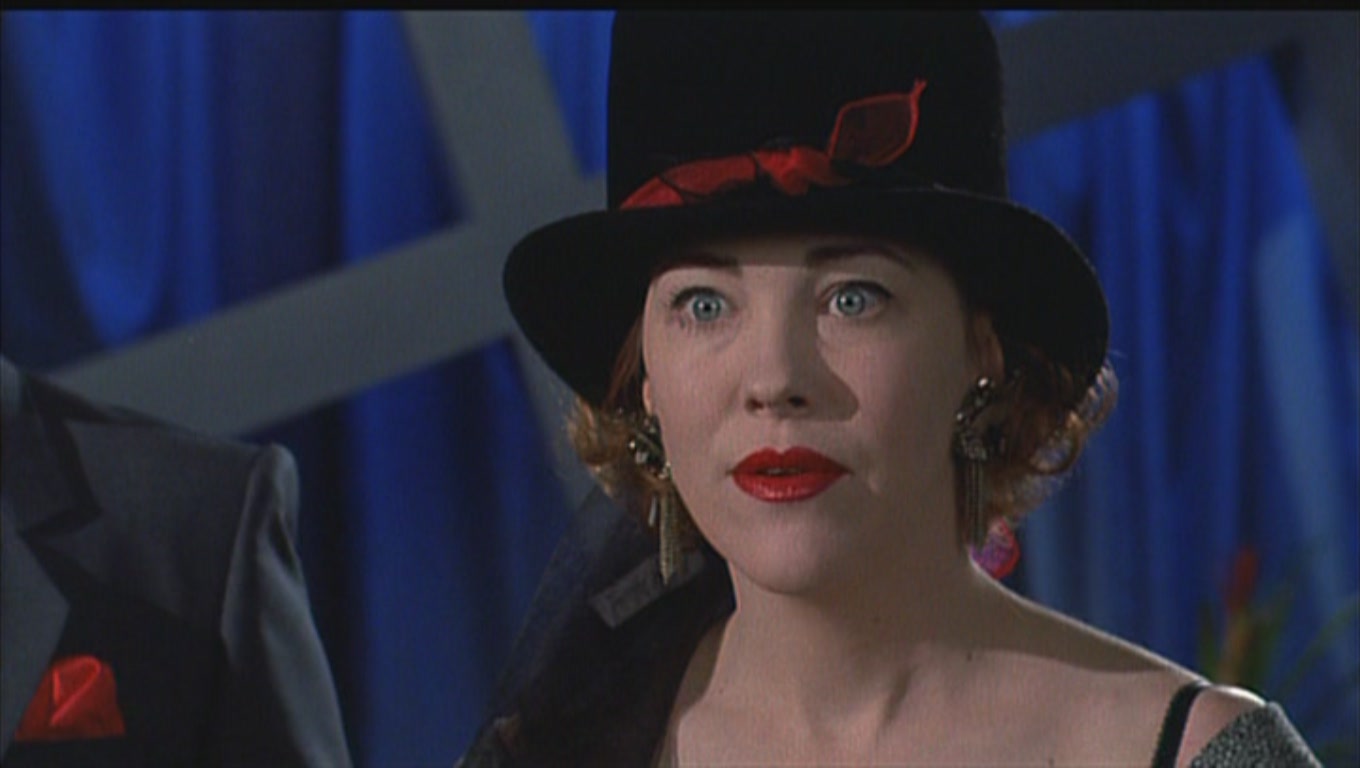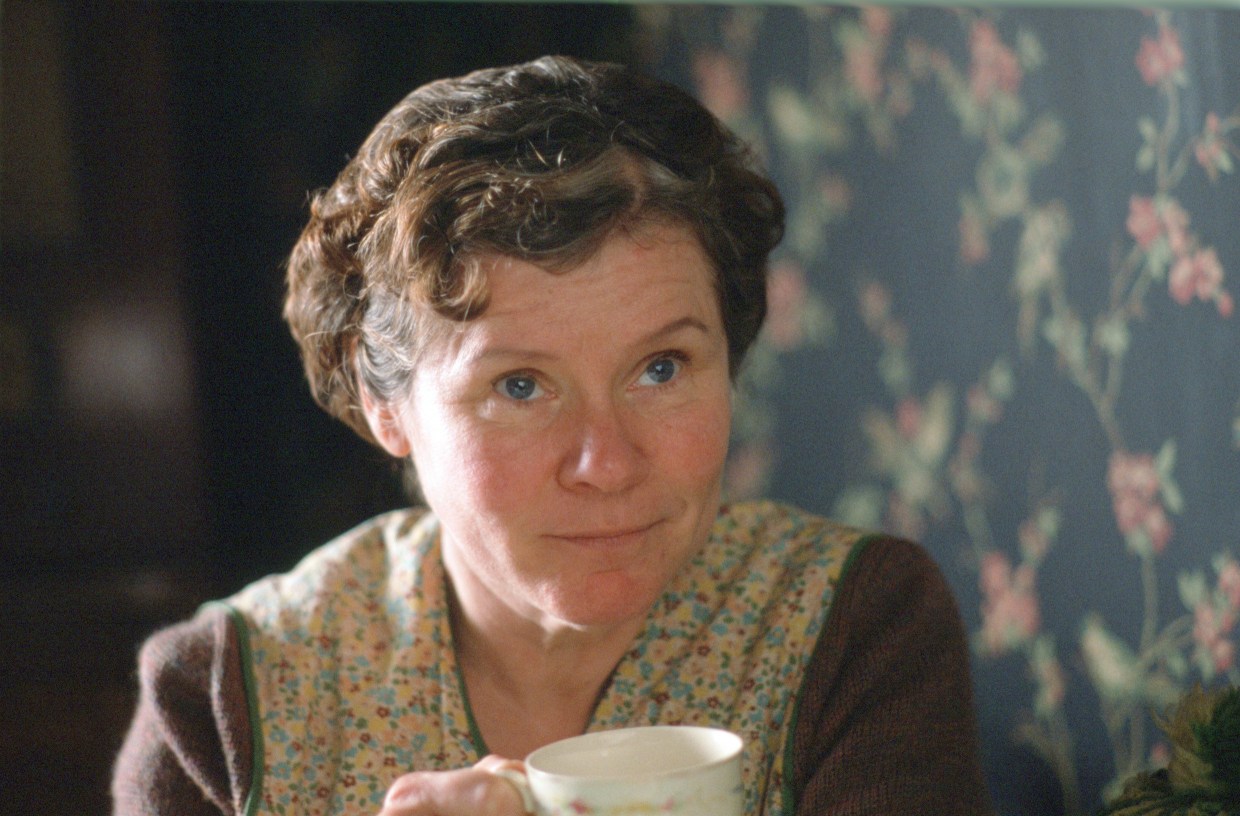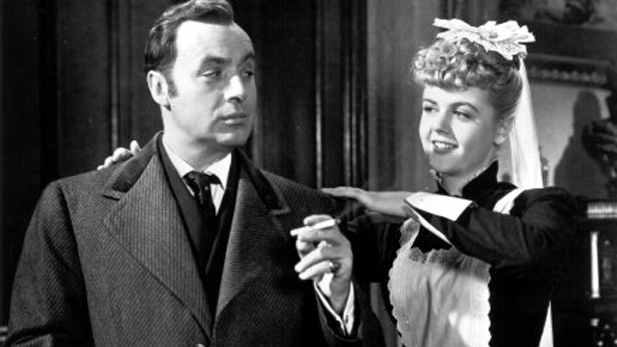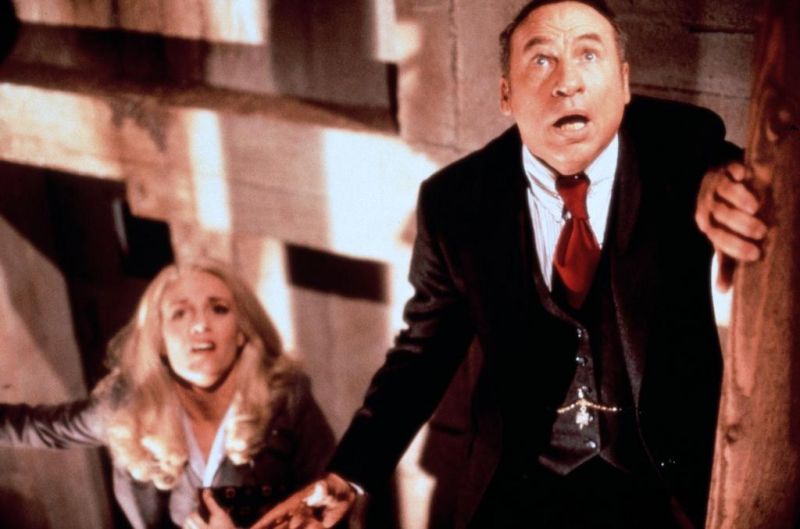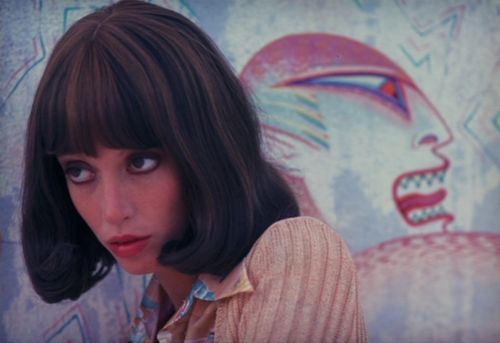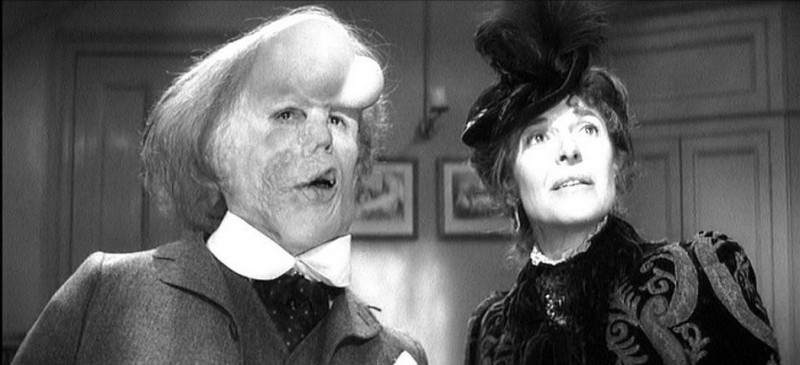20. Elsa Lanchester
In the history of film there are many one-scene wonders, actors who are only in the movie for a couple of minutes, yet they burn themselves in your memory. Baldwin in Glengarry Glen Ross. Morehead in Citizen Kane. Dinklage in Elf. None of them have become the walking icon that is Elsa Lanchester’s Bride of Frankenstein. She arrives just in time for the credits, makes some tremendous noises and is blown to atoms with most of the cast. It is also often forgotten that she also plays the film’s narrator Mary Shelley. Ms. Shelley is just one of Lanchester’s many great performances in the shadow of the Bride’s towering hair.
Many of her roles were, like Shelley and the Bride, too weird for this world: dotty aunts, aristocratic ninnies and in The Big Clock a loose-limbed, untidy, disheveled painter with unorthodox ideas about parenting. That character’s eccentricities defied everything a post war woman should be, and the performance defied everything expected from the era’s straight-laced, straight-backed actresses.
19. Jane Lynch
Since her breakthrough performance as a lesbian dog trainer in Christopher Guest’s Best In Show (2000), Jane Lynch has been a tireless comedy machine appearing in at least 60 films and dozens of tv shows (including starring in two or three of her own). Sometimes she will appear only for a scene or two, but she always makes it memorable. She is Steve Carrell’s sexually aggressive manager in The 40-Year Old Virgin, Will Farrell’s southern mother in Talladega Nights, and a former porn star/current witch/occasional folk singer in A Mighty Wind.
One of her most impressive performances is that of a subdued, needy, self-centered therapist in the film Afternoon Delight where she manages to effortlessly steal every scene she is in from professional scene-stealer Kathryn Hahn.
18. Maria Ouspenskaya
Born in Russia in 1876, Ouspenskaya trained under the father of Method acting, Konstantin Stanislavski. In 1922, she immigrated to New York City, where she herself taught acting. It wasn’t until she was 60 that she made her American film debut in 1936, appearing in William Wyler’s Dodsworth. She received an Oscar nomination for her role as a domineering baroness, despite being on screen for only a few minutes. Thus began her career as Hollywood’s Old European Woman, bringing her strength and charm to Love Affair, Waterloo Bridge and King’s Row.
It is as the old gypsy woman in The Wolf Man for which she is best remembered, and deservedly so. In a movie that has not aged well, her performance remains fresh. She creates a sorrowful, strong, fearless woman out of a part that most actresses would play as nothing more than a walking omen.
17. Sally Hawkins
Sally Hawkins is translucent, exposing her characters right down to their nerve endings. She has a way of empathizing with her characters that is so powerful that she passes the empathy along to the audience. She is a feeling machine, creating emotions for the audience to process.
Observe her most highly-regarded role of Poppy in Happy-Go-Lucky, our optimist guide laughing her way through the mundane dreariness of a Mike Leigh world. Poppy is so happy that Hawkins is unrecognizable in her one scene in her follow-up movie An Education just because she doesn’t smile once. For this one scene the audience feels the empathy that Hawkins feels for her character who is feeling empathy for Carey Mulligan’s character who is the protagonist that the audience suddenly realizes that they are not empathizing with enough but now that they are, they realize that she is in really deep trouble.
One watches these movies and the rest of her work- her other Mike Leigh movies, her two Woody Allen movies (particularly her work as Ginger, the working class sister in Blue Jasmine) plus a heap of British films and the newest Godzilla. One can watch all of those and still not recognize her walking down the sidewalk. She is simply too real. One might say she is translucent.
16. Catherine O’Hara
Springing from the Toronto improv comedy scene O’Hara made her name playing scores of different roles on the legendary Canadian show SCTV. Her first post SCTV role was worthy of her weird talents playing a vengeful ice cream truck driver in Martin Scorsese’s After Hours, but her suburban beauty soon got her assigned to mother roles. Most famously as the loving yet distracted mom in the Home Alone films, most deviously as the aloof and self-centered mom in Beetlejuice.
It was Christopher Guest who has best found use of her talents. He allowed her to display her improvisation skills while also showing her range in his quartet of comic films Waiting for Guffman (deluded amateur actor), Best In Show (dog enthusiast with a lot of a past), A Mighty Wind (faded folk star) and For Your Consideration (deluded professional actor).
15. Imelda Staunton
Imelda Staunton’s thing is to be cheerful and lovable. She first gained international exposure in Kenneth Branaugh’s films Peter’s Friends and Much Ado About Nothing. From there she offered her jolly presence to supporting parts in a stream of British costume pictures of the 90’s(Sense and Sensibility, Twelfth Night, Shakespeare in Love).
It was in the following decade that she turned her cheerful demeanor on its head. The giving and kind Vera Drake in Mike Leigh’s movie of the same name extends her charity to performing certain services for women in desperate circumstances. Then came Delores Umbridge in the Harry Potter series, which she plays as bubbly as most of her other roles. This time, though, she is also an example of an evil that is not only banal, but tacky. Say what you will about Voldemort, but Stanton’s Umbridge is the most loathsome villain in the Potterverse.
14. Angela Lansbury
One of the scariest monsters in film history comes from the most unlikely sources. Yes, she is a natural for grandmas (The Company of Wolves), magical nannies (Bedknobs and Broomsticks), kindly amateur sleuths (The Mirror Crack’d and the tv series Murder She Wrote), and anthropomorphic teapots (Beauty and the Beast). When younger, she could also play appealing not-quite-ingénue parts like the crafty maid in Gaslight and the suicidal singer in The Picture of Dorian Gray.
All this makes it all the more terrifying to see her performance as the Soviet sleeper agent Mrs Iselin in The Manchurian Candidate. She is perfectly fine with selling out her country while sacrificing her son for her own political advancement (or her husband’s, who is easy enough to control), but only after she hypnotizes her beloved boy into killing his fiancée and assassinating a presidential candidate. This not only puts Hannibal Lechter in perspective but also shows the bottomless talent of Angela Lansbury.
13. Madeline Kahn
Madeline Kahn was a human variety show. She sang. She danced. She was an expert at broad characters and screwball comedy. She could turn on a dime to deliver a moment of drama then spin right back to the fun stuff. She was beautiful and charming. She was the perfect movie star for the Roosevelt era. The problem is that she arrived on the scene in the late Nixon years, a time famous for gritty cinematic realism.
Fortunately, at the time there were a few cinematic throwback artists who were in need of Kahn’s talents. Peter Bogdanovich found she was perfect for his nostalgic comedies What’s Up, Doc? and Paper Moon. She went on to be a core member of Mel Brooks’ stock company throughout the 70’s (Blazing Saddles, Young Frankenstein, High Anxiety and History of the World Part 1). Brooks was smart enough to always find an opportunity for her to sing. Her finest moment may be the scene in the mystery romp Clue when she broke free of the tightly wound script to improvise a short unsung aria about the flames of rage.
12. Shelley Duvall
In 1970, Robert Altman met a waifish, other-worldly nutrition student at a party in Houston. He didn’t care that she had no desire to be an actress. She was far too interesting not to be in pictures. Besides, she might have been the only woman like her on the planet, so he could not pass up such an opportunity. He cast her as the love interest of Brewster McCloud (a bird-like woman for a boy trying to fly), and then he kept casting her, finding a part for her in nearly every movie he made for the next ten years. By 1980, she had an enviable resume of characters- a groupie, a mail-order bride, a first lady, a bank robber, Olive Oyl- women that had little in common save for Duvall’s wide eyes.
Other directors saw in Duvall’s quirkiness the chance to bring something fresh to stock roles. Who did Stanley Kubrick call when he needed the most terrified woman ever in a horror movie? Who did Terry Gilliam call when he needed not one, but two perpetually distressed damsels in Time Bandits? After a decade and a half of these extreme roles, it was almost a relief in 1987 when she was cast as a normal small town woman in Roxanne.
11. Anne Bancroft
Despite her humble beginnings, there was always something exotic and grand about Anne Bancroft. This not only made her perfect for countesses and divas (The Turning Point, The Elephant Man), but it also made her ideal for uncommon common women. If cast as a nun, she was the mother superior (Agnes of God); If cast as a teacher she was a Miracle Worker. Even the mothers she played tended to have a certain grandiosity to them.
And then there’s Mrs Robinson in The Graduate, a woman too smart, too grand and too exotic to be content with her existence as a housewife. Mrs Robinson’s famed animal print clothes aren’t just there as a symbolic warning to her young lover; they also show that she’s an animal damned to live out her life in the cage of a Los Angeles suburb. That’s no place for an Anne Bancroft character to be.
